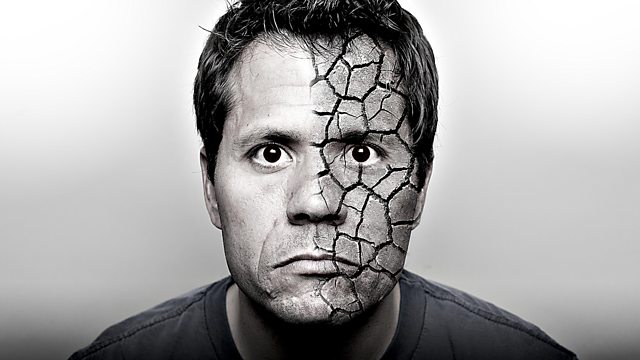Why is human skin so rubbish?
Rhinoceroses don’t get paper cuts. An envious listener wonders why his skin isn’t that tough. How does delicate human skin do its jobs and could science give it an upgrade?
If you’ve ever fallen over and grazed your skin, maybe you wished it were made of stronger stuff. The tough hide of a rhinoceros or the protective armour of a stag beetle would do a better job. It’s a thought that’s been bothering CrowdScience listener Paul, who points out that our skin also suffers from acne, eczema and hives; it dries out; it bruises. In fact, human hide is so vulnerable that we cover our feet in other animals’ skin and our bodies in clothes just to make life more comfortable. Is this really the pinnacle of evolution?
Marnie Chesterton makes the case for the largest, fastest-growing organ, hiding in plain site on our body. Tissue Engineer Professor Sheila MacNeil from Sheffield University explains how skin manages to be breathable yet waterproof; flexible yet stronger than steel; sensitive to touch but protective against pollution and damaging UV. Skin biologist Dr Christina Philippeos from King’s College London explains how our bodies make a scar.
Professor Muzlifah Haniffa has developed an atlas of the human skin – a tool to help researchers unravel the mysteries of how different skin cells interact. This atlas should help treat skin diseases in the future. Over in Tanzania’s Regional Dermatology Training Centre in Moshi, Dr Daudi Mavura talks us through a rare but devastating skin disorder called Xeroderma Pigmentosum, or XP. For children with XP, sunlight is dangerous because a mutation in the skin’s DNA repair mechanism means that UV rays can cause lesions and tumours.
Our epidermis is already multifunctional but over at Ben May Department of Cancer Research at the University of Chicago, Professor Xaioyang Wu and colleagues are looking at how much more skin could do. Personalised skin grafts may provide living drug patches to help people manage their disease, addiction or even weight.
With thanks to Dr Lynne MacTavish from Mankwe Wildlife Reserve in South Africa for describing a rhino’s skin.
Produced and presented by Marnie Chesterton.
[Image: Young and Old, dry skin
Credit: Eric A. Nelson/Getty Images]
Last on
More episodes
Broadcasts
- Fri 20 Aug 2021 19:32GMT91�ȱ� World Service
- Sat 21 Aug 2021 01:32GMT91�ȱ� World Service Europe and the Middle East
- Sun 22 Aug 2021 01:32GMT91�ȱ� World Service East and Southern Africa & West and Central Africa only
- Mon 23 Aug 2021 03:32GMT91�ȱ� World Service Australasia, South Asia & East Asia only
- Mon 23 Aug 2021 04:32GMT91�ȱ� World Service Americas and the Caribbean
- Mon 23 Aug 2021 08:32GMT91�ȱ� World Service
- Mon 23 Aug 2021 12:32GMT91�ȱ� World Service except East and Southern Africa, East Asia, South Asia & West and Central Africa
Podcast
-
![]()
CrowdScience
Answering your questions about life, Earth and the universe


